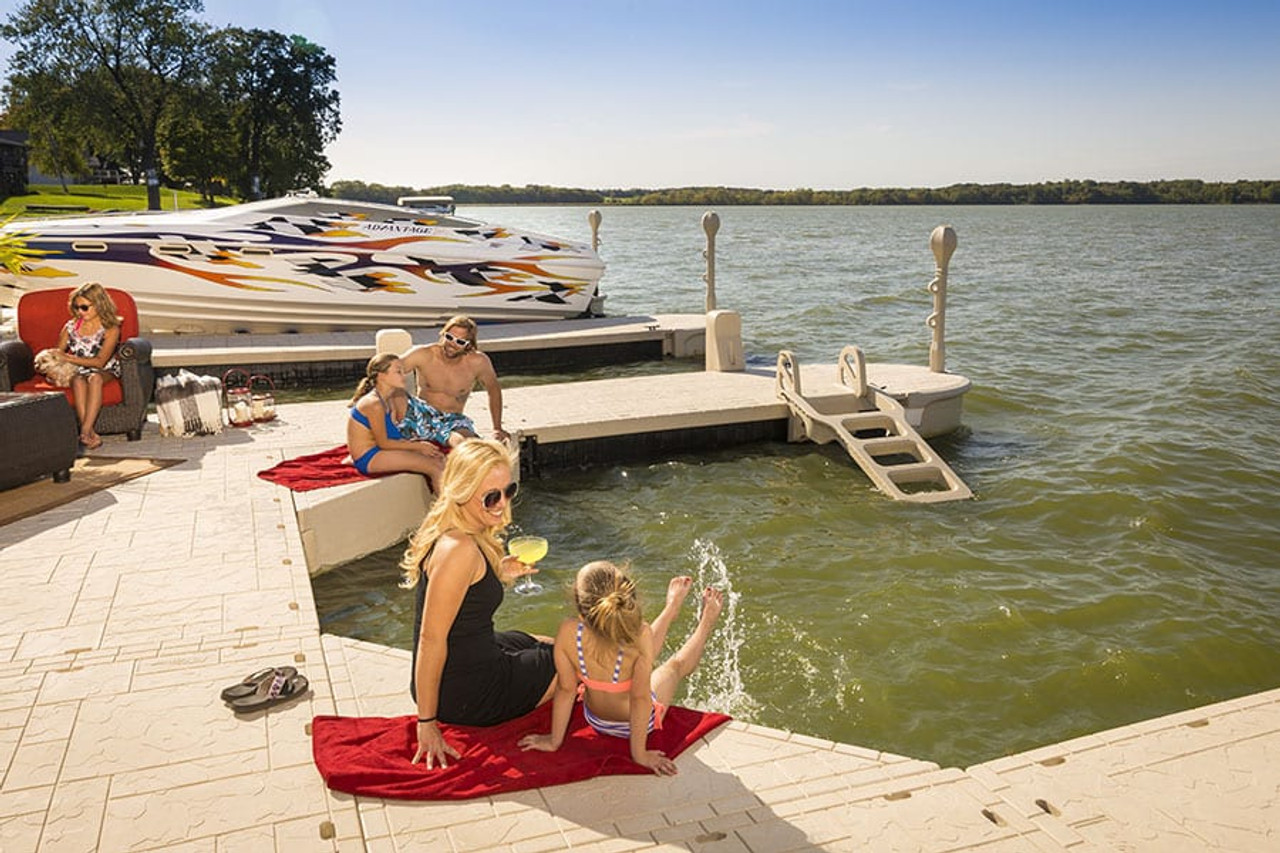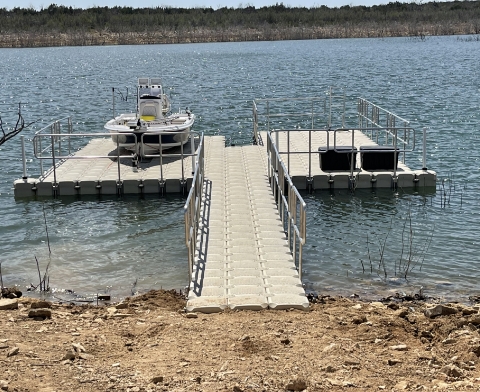Choosing the Right Dock Company: Elements to Consider for a Seamless Setup
Choosing the Right Dock Company: Elements to Consider for a Seamless Setup
Blog Article
The Ultimate Guide to Choosing the very best Floating Docks
Picking the excellent floating dock requires a thorough understanding of different elements that affect both efficiency and long life. Aspects such as dock types, products, and necessary features significantly impact your decision-making procedure.
Comprehending Floating Dock Types
When picking a floating dock, it is necessary to understand the different kinds offered, as each offers unique objectives and applications. Floating docks largely fall under three classifications: modular, stationary, and pontoon docks.
Modular docks are made up of specific sections that can be conveniently assembled or reconfigured, making them ideal for transforming water levels and varied usages, such as recreational tasks or commercial procedures. Their adaptability enables modification based upon details requirements.

Pontoon docks are characterized by their resilient structure, often made up of several pontoons that give security and support. They are especially well-suited for larger vessels and are generally used in marinas or for beachfront residential properties. Recognizing these types help in picking one of the most proper floating dock to meet details requirements, ensuring optimum functionality and safety and security.
Trick Materials for Resilience
Picking the right products for floating docks considerably effects their durability and durability. One of the most common products consist of wood, plastic, steel, and composite products, each offering distinct advantages and constraints.
Timber, typically favored for its aesthetic allure, requires regular maintenance to stand up to dampness and decay. Pressure-treated lumber can boost resistance to rot, but it may still be prone to parasites and weathering.

Plastic docks, constructed from high-density polyethylene (HDPE), are immune to corrosion, UV radiation, and influence, making them a prominent selection for seaside atmospheres. Their lightweight nature also promotes simple setup and relocation.
Steel docks, commonly built from light weight aluminum or galvanized steel, supply extraordinary strength and durability. They are immune to deterioration, particularly when dealt with, however might require added insulation to stop warmth build-up in warm environments.
Composite materials, integrating wood fibers and plastics, supply the benefits of both wood and plastic, standing up to moisture and fading while needing marginal maintenance. - floating dock company
Ultimately, the option of products need to align with ecological problems, planned usage, and upkeep preferences to make sure the floating dock continues to be functional and visually pleasing gradually.
Necessary Attributes to Consider
While the option of products is critical, considering important functions for floating docks is similarly important to make certain optimal performance and individual contentment. One essential function to assess is the dock's buoyancy ability, which identifies just how much weight it can support without submerging. floating dock services. This is essential for accommodating boats, individual boat, and also recreational tasks
Furthermore, mobility is a significant factor to consider. Depending on your requirements, you might desire a dock that is very easy to transport and disassemble, particularly if you intend to move it seasonally. Stability is another necessary attribute; a well-designed floating dock needs to decrease activity triggered by wind and water currents, supplying a secure system for individuals.
Safety features, such as non-slip surface areas and rounded sides, are also vital to stop accidents, specifically in wet problems. Think about the schedule of accessories, such as ladders, bumpers, and cleats, which can enhance the capability of your dock.
Installation and Maintenance Tips
Establishing up and maintaining a drifting dock calls for careful planning and focus to detail to ensure its long life and optimal performance. Begin by choosing YOURURL.com an ideal place that minimizes exposure to solid currents and waves, which can create wear and tear. Make sure that the water deepness suffices for the dock's elevation which it is anchored securely to avoid activity.
Throughout installation, comply with the manufacturer's guidelines carefully, as inappropriate setting up can endanger security. Usage top notch products immune to deterioration, such as light weight aluminum or dealt with timber, to boost resilience. Regularly inspect all components, consisting of floats, ports, and anchoring systems, for signs of damage or wear.
Maintenance is critical for expanding the life of your dock. Tidy the surface areas occasionally to avoid algae build-up and look for any loose installations that might need tightening up. Ensure they remain undamaged and free from leaks if your dock utilizes flotation gadgets. Additionally, consider applying protective finishes to wooden parts to minimize weathering impacts. By adhering to these installment and maintenance tips, you can appreciate a trustworthy and practical floating dock for many years to come.
Budgeting for Your Dock
Budgeting for your dock is an essential step that can substantially affect your overall fulfillment and financial investment in a beachfront building. Developing a clear budget plan aids you navigate the different alternatives readily available and ensures you make notified choices that align with your financial abilities.
Begin by determining the size and style of the dock you need, as these variables will greatly affect the expense. Floating docks can differ considerably in cost, relying on products, buoyancy, and attributes like accessories and ramps. Research study various suppliers and distributors to contrast rates and recognize the marketplace value.
In addition to initial costs, consider ongoing expenditures such as maintenance, insurance policy, and possible fixings. Designate funds for these repeating costs to prevent shocks down the line. It's also prudent to budget plan for any type of required licenses or evaluations, which may be required by local policies.
Finally, remember the prospective roi. A well-planned dock can boost your home's value and allure, supplying a positive financial influence in the lengthy term. By budgeting efficiently, you can guarantee that your dock meets your demands without jeopardizing your monetary stability.
Final Thought
In conclusion, selecting the ideal floating dock demands a thorough analysis of numerous variables, consisting of dock types, materials, Learn More important features, and installment procedures. Cautious consideration of budgetary constraints will certainly additionally guarantee a sound investment.

While the option of materials is vital, considering important features for floating docks is just as vital to ensure ideal click to read performance and user contentment.Establishing up and preserving a floating dock calls for careful planning and attention to detail to ensure its durability and optimal performance. Floating docks can vary considerably in rate, depending on materials, buoyancy, and functions like ramps and devices.In final thought, selecting the suitable floating dock requires an extensive analysis of different elements, including dock types, materials, necessary attributes, and installation procedures.
Report this page